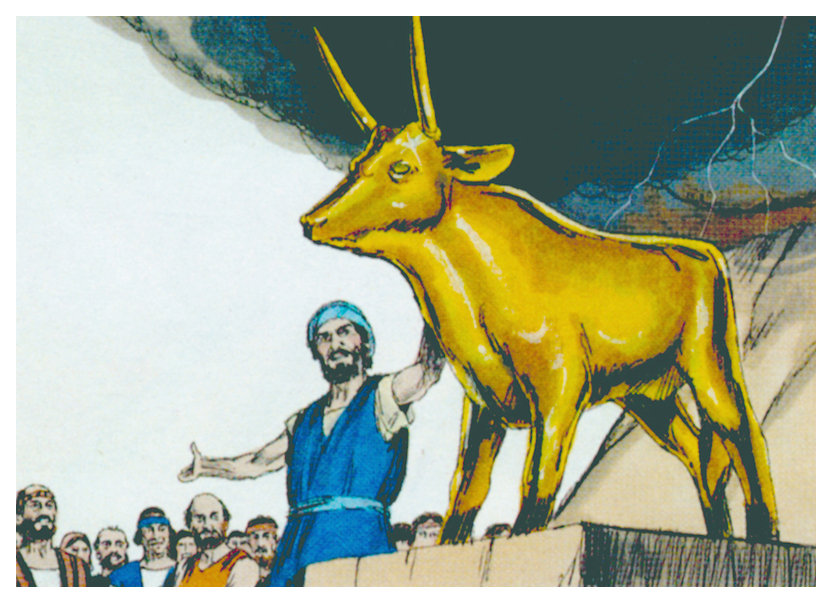Sacred cow (idiom) on:
[Wikipedia]
[Google]
[Amazon]
 Sacred cow is an
Sacred cow is an
 Sacred cow is an
Sacred cow is an idiom
An idiom is a phrase or expression that typically presents a figurative, non-literal meaning attached to the phrase; but some phrases become figurative idioms while retaining the literal meaning of the phrase. Categorized as formulaic language, ...
, a figurative reference to cattle in religion and mythology
Due to the multiple benefits from cattle, there are varying beliefs about cattle in societies and religions. In some regions, especially most states of India, the slaughter of cattle is prohibited and their meat may be taboo.
Cattle are conside ...
. A figurative sacred cow is a figure of speech
A figure of speech or rhetorical figure is a word or phrase that intentionally deviates from ordinary language use in order to produce a rhetorical effect. Figures of speech are traditionally classified into '' schemes,'' which vary the ordinary ...
for something considered immune from question or criticism, especially unreasonably so. This idiom is thought to originate in American English
American English, sometimes called United States English or U.S. English, is the set of variety (linguistics), varieties of the English language native to the United States. English is the Languages of the United States, most widely spoken lan ...
, although similar or even identical idioms occur in many other languages.
Background
The idiom is based on the popular understanding of the elevated place of cows inHinduism
Hinduism () is an Indian religion or '' dharma'', a religious and universal order or way of life by which followers abide. As a religion, it is the world's third-largest, with over 1.2–1.35 billion followers, or 15–16% of the global p ...
and appears to have emerged in America in the late 19th century. The reverence for cows in the traditionally agrarian Vedic
upright=1.2, The Vedas are ancient Sanskrit texts of Hinduism. Above: A page from the '' Atharvaveda''.
The Vedas (, , ) are a large body of religious texts originating in ancient India. Composed in Vedic Sanskrit, the texts constitute the ...
Hindu society stems from the reluctance to harm an animal whose milk humans consume after being weaned off the mother's milk.
In Jewish tradition, there is a similar moral stigma against cooking veal
Veal is the meat of calves, in contrast to the beef from older cattle. Veal can be produced from a calf of either sex and any breed, however most veal comes from young male calves of dairy breeds which are not used for breeding. Generally, v ...
(calf meat) in cows milk. A literal sacred cow or sacred bull
Cattle are prominent in some religions and mythologies. As such, numerous peoples throughout the world have at one point in time honored bulls as sacred. In the Sumerian religion, Marduk is the "bull of Utu". In Hinduism, Shiva's steed is Nan ...
is an actual cow or bull that is treated with sincere respect.
One writer has suggested that there is an element of paradox
A paradox is a logically self-contradictory statement or a statement that runs contrary to one's expectation. It is a statement that, despite apparently valid reasoning from true premises, leads to a seemingly self-contradictory or a logically u ...
in the concept of respect for a sacred cow, as illustrated in a comment about the novelist V. S. Naipaul
Sir Vidiadhar Surajprasad Naipaul (; 17 August 1932 – 11 August 2018) was a Trinidadian-born British writer of works of fiction and nonfiction in English. He is known for his comic early novels set in Trinidad, his bleaker novels of alienati ...
: "V. S. Naipaul ... has the ability to distinguish the death of an ordinary ox, which, being of concern to no one, may be put quickly out of its agony, from that of a sacred cow, which must be solicitously guarded so that it can die its agonizing death without any interference."In popular culture
Themotto
A motto (derived from the Latin , 'mutter', by way of Italian , 'word' or 'sentence') is a sentence or phrase expressing a belief or purpose, or the general motivation or intention of an individual, family, social group, or organisation. Mot ...
of the satirical
Satire is a genre of the visual, literary, and performing arts, usually in the form of fiction and less frequently non-fiction, in which vices, follies, abuses, and shortcomings are held up to ridicule, often with the intent of shaming or e ...
magazine ''The Realist
''The Realist'' was a magazine of "social-political-religious criticism and satire", intended as a hybrid of a grown-ups version of ''Mad'' and Lyle Stuart's anti-censorship monthly ''The Independent.'' Edited and published by Paul Krassner, an ...
'' was "Irreverence is our only sacred cow".
See also
*Holy cow (expression)
"Holy cow!" (and other similar terms), an exclamation of surprise used mostly in the United States, Canada, Australia, and England, is a minced oath or euphemism. The expression dates to at latest 1905. Its earliest known appearance was in a to ...
*Iconoclasm
Iconoclasm (from Ancient Greek, Greek: grc, wikt:εἰκών, εἰκών, lit=figure, icon, translit=eikṓn, label=none + grc, wikt:κλάω, κλάω, lit=to break, translit=kláō, label=none)From grc, wikt:εἰκών, εἰκών + wi ...
*Literal and figurative language
Literal and figurative language is a distinction within some fields of language analysis, in particular stylistics, rhetoric, and semantics.
*Literal language uses words exactly according to their conventionally accepted meanings or denotation ...
*Malapropism
A malapropism (also called a malaprop, acyrologia, or Dogberryism) is the mistaken use of an incorrect word in place of a word with a similar sound, resulting in a nonsensical, sometimes humorous utterance. An example is the statement attributed to ...
References
External links
19th-century neologisms American English idioms Hinduism and cattle {{vocab-stub